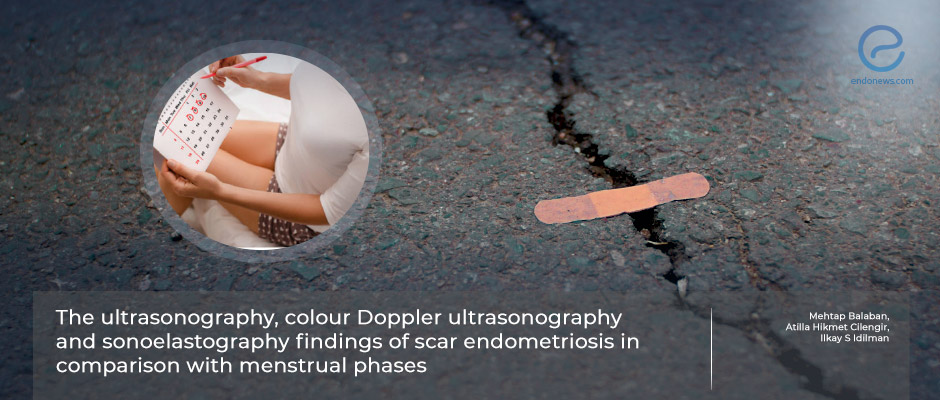Time to change out taboos about the radiologic evaluation of scar endometriosis
Nov 11, 2022
No difference is there according to menstrual phases when evaluating scar endometriosis
Key Points
Highlights:
- The study tells that there is no need to examine patients with scar endometriosis on their menstruation days, yet the findings are the same on all menstruation phases.
Importance:
- The incidence of scar endometriosis is rare but is accelerating with the increasing rates of c-section procedures, and optimizing the evaluation time is important.
- Against the belief of applying during menstruation, the study reveals no change in findings according to different menstrual phases.
What's done here:
- A total of 24 excised and histologically confirmed cases of scar endometriosis have been evaluated with their preoperative radiologic findings.
- All lesions have been checked by ultrasonography, color Doppler US, and sono-elastography by evaluating lesion diameters, vascularization, and stiffness.
- 18 masses were evaluated in the menstrual phase and 24 masses were evaluated in the ovulatory phase while only 17 patients had both timings of evaluation.
Key Results:
- The volume of lesions hasn’t changed in different menstrual phases.
- The resistive index referring to the vascularization of lesions on color doppler remained similar.
- And the stiffness calculated by sono-elastography was again similar on menstruation and ovulation days.
Limitations:
- The number of patients included is relatively small and not all patients have been evaluated one by one and compared according to their own menstrual phases.
Lay Summary
Scar endometriosis is one of the rare forms of endometriosis. According to traditional belief, it has always been evaluated radiologically on menstruation days.
In the study conducted by Balaban et al, the authors compared the differences in lesions according to different phases of the menstrual period. A total of 24 excised and histologically confirmed cases of scar endometriosis have been evaluated with their preoperative radiologic findings. All lesions were checked by ultrasonography, color Doppler US, and sono-elastography by evaluating lesion diameters, vascularization, and stiffness.
Eighteen cases were evaluated in the menstrual phase and 24 cases were evaluated in the ovulatory phase while only 17 patients had both timings of evaluation. The volume of lesions did not change in different menstrual phases. The resistive index referring to the vascularization of lesions on color doppler remained similar.
The stiffness calculated by sono-elastography was also similar on menstruation and ovulation days. The results suggest that there might be no reason to wait for menstruation to evaluate scar endometriosis.
This is the first study that evaluates sonographic features of scar endometriosis based on the menstrual phase and found that scar endometriosis lesions did not have a significant difference, however, future studies are needed for scientific recommendations.
Research Source: https://pubmed.ncbi.nlm.nih.gov/35959807/
scar endometriosis ultrasonography (US) color Doppler US (CDUS) sonoelastography (SEL)

